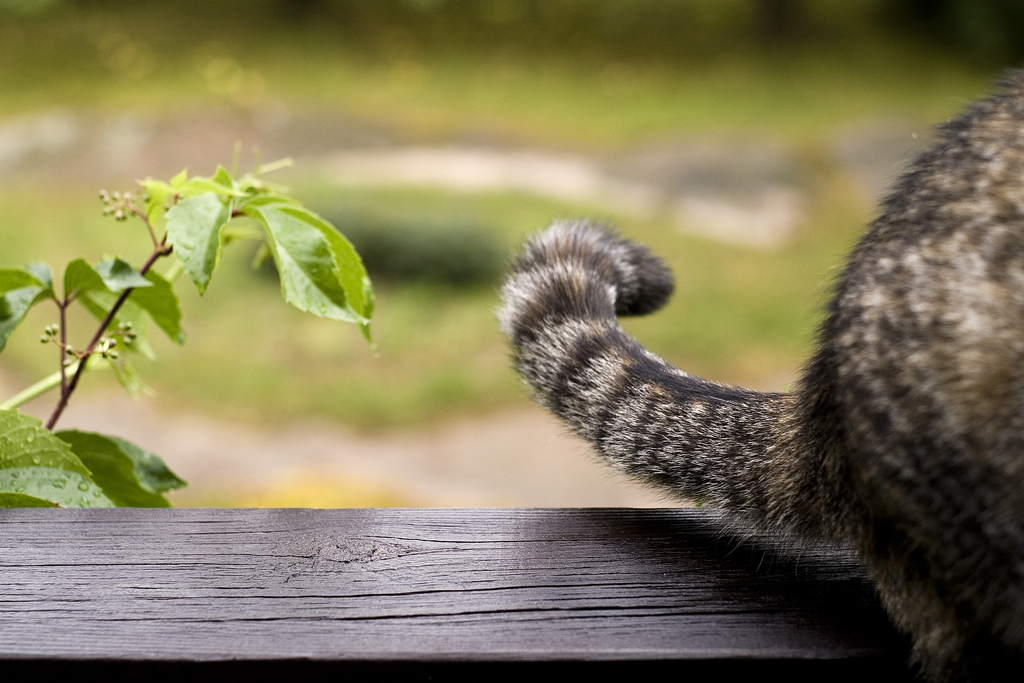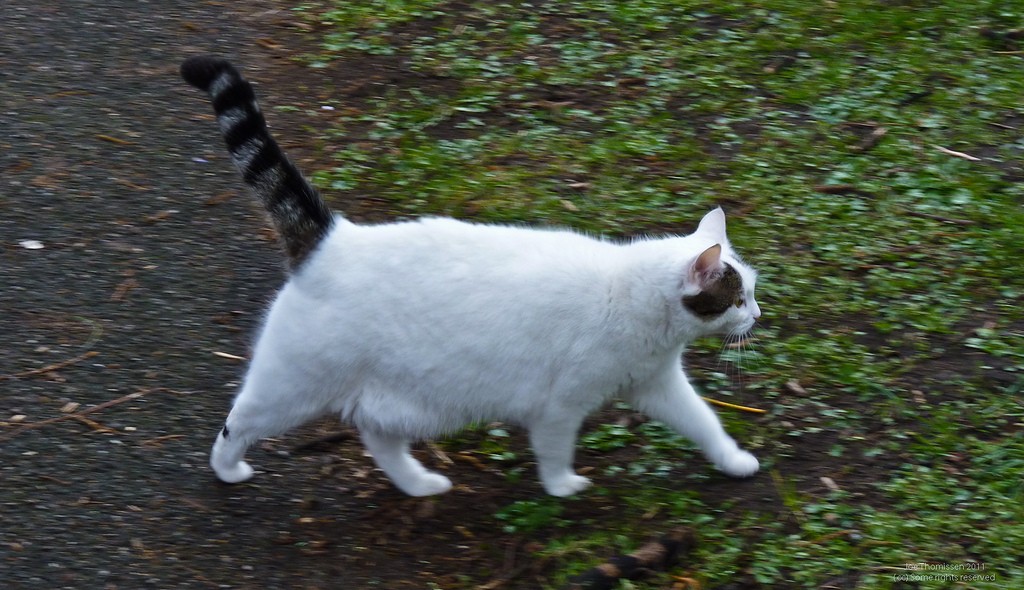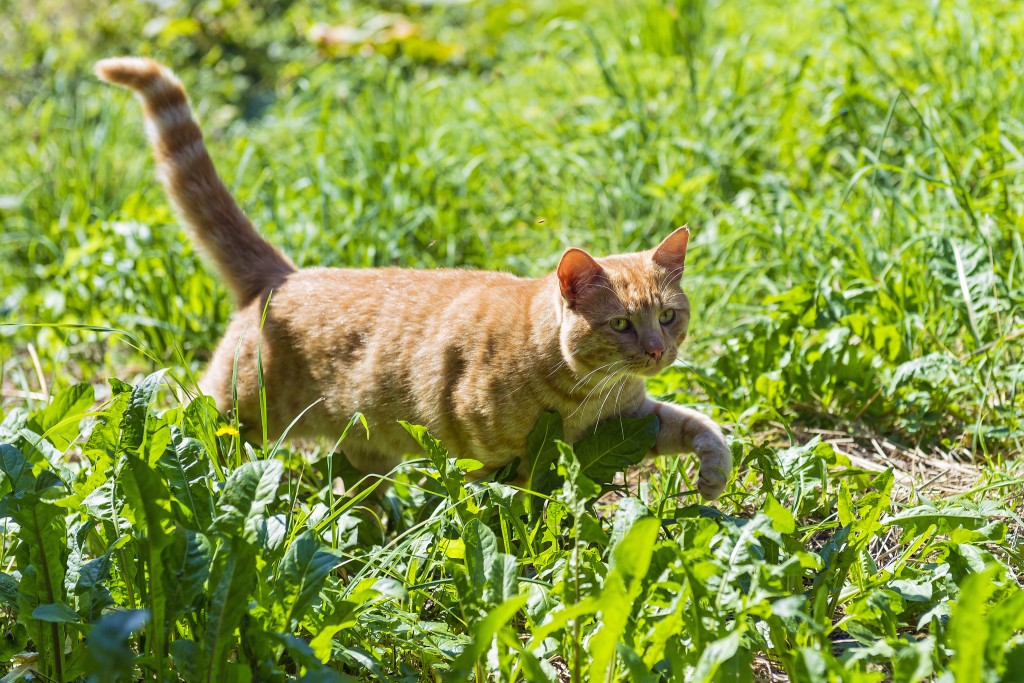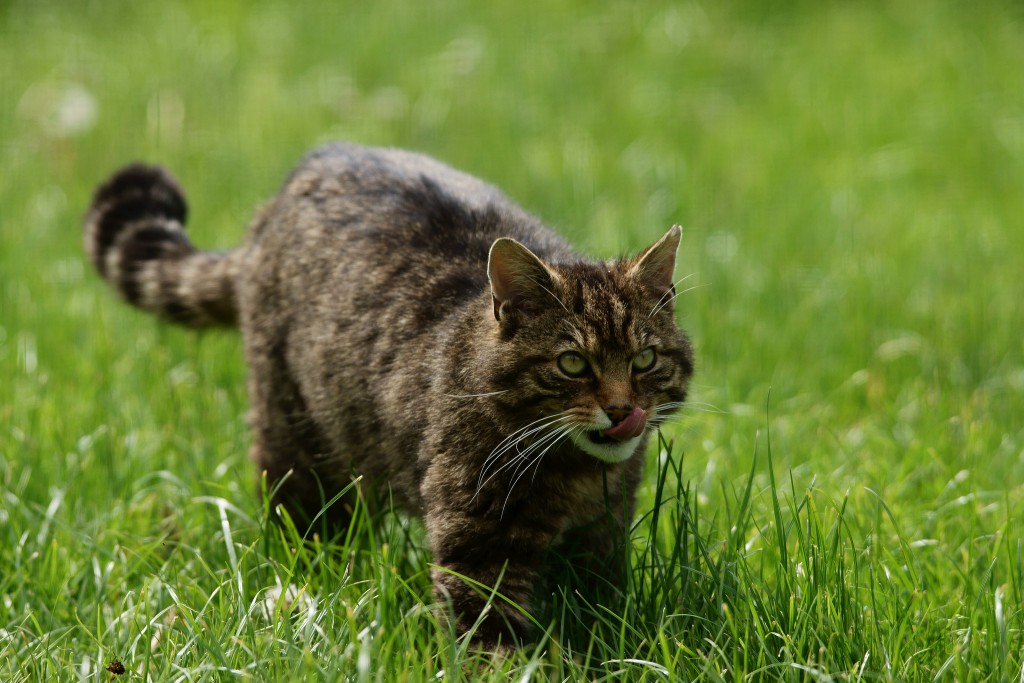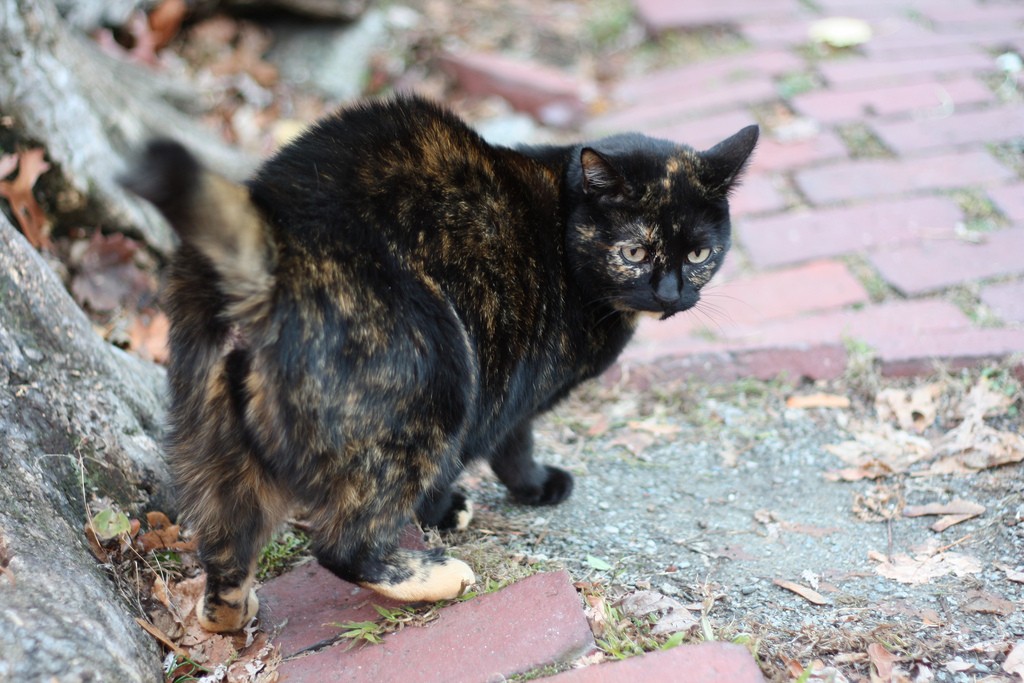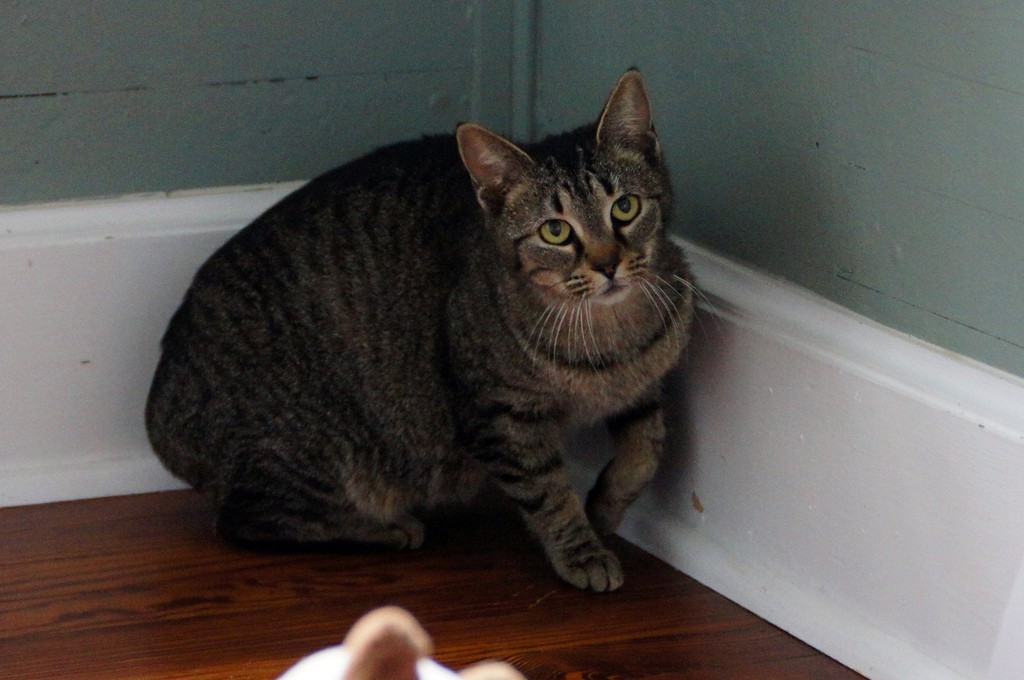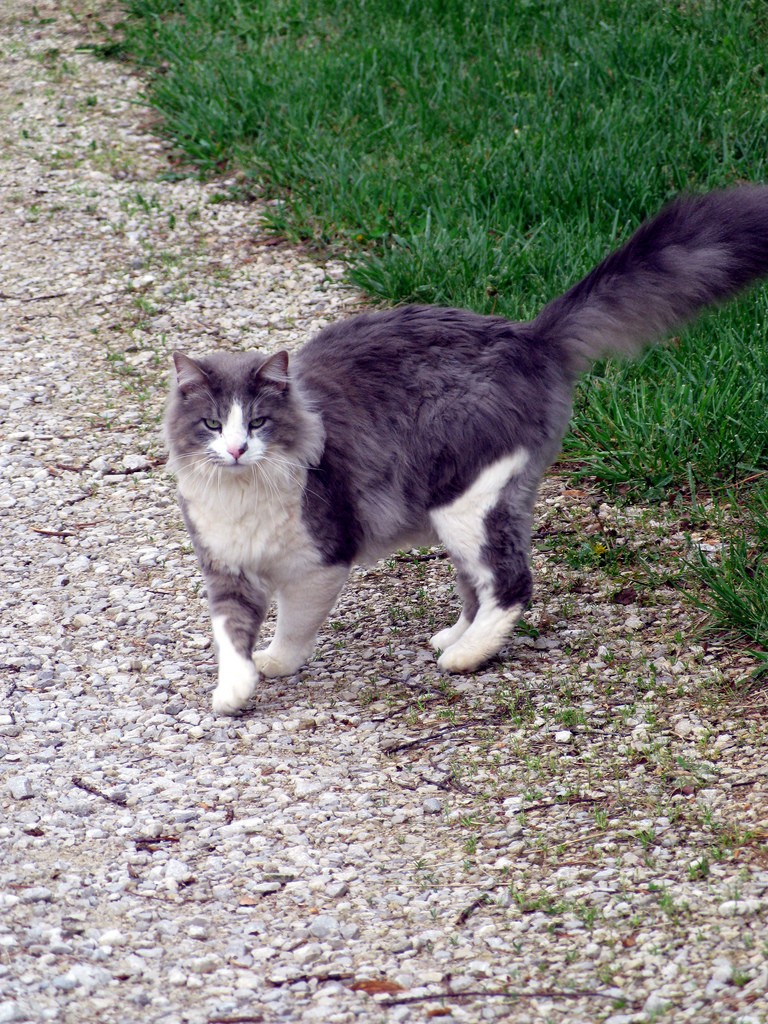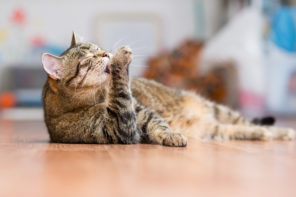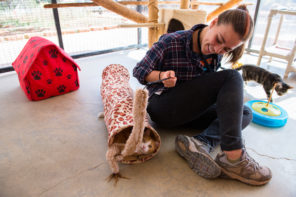Through facial expressions, we can often guess how another person is feeling without having to ask. A smile indicates joy, a scowl anger and raised eyebrows often mean confusion or shock.
Cats also provide emotional cues through body language, and their tails can be the most communicative. Since your furry companion can’t verbally tell you how he or she is feeling, it’s important to understand what your cat’s tail is telling you before beginning leash training or heading out for any outdoor expeditions.
This way, you’ll be able to spot signs of distress and take action to get your feline friend back on the road to contentment.
Tail straight up
You’ve probably seen your cat’s tail in the straight-up position when he or she greets you at the door or while you’re pouring food in the bowl. It’s often known as their “hello” and indicates happiness. It’s also frequently accompanied by rubbing. So if you’re taking a neighborhood walk with your cat, and you notice his or her tail standing straight up, your feline friend is happy and ready to greet adventure.
Tail up with end curved
If you see your cat’s tail standing up with a slight curve at the end, you may notice it bears a resemblance to a question mark, which is fitting, since this position indicates he or she is feeling relaxed and inquisitive.
Swishing tail
A cat slowly moving his or her tail back and forth while looking focused is getting ready to pounce! This behavior is indicative of kitty playfulness, so insects, cat toys or your wiggling toes should be prepared.
Flicking tail
While a playful cat will slowly move his or her tail, an irritated or distressed cat will rapidly flick or wag. This behavior is often seen during veterinary visits. If you see your cat with a low, flicking tail, your feline is annoyed or afraid and more inclined to show aggressive behavior.
Tail tucked while standing
A cat standing with his or her tail tucked underneath the body is expressing a high degree of fear. This submissive position is used to protect a cat’s most sensitive area, the stomach. If your cat shows this position while on an adventure, he or she is letting you know that something in the environment is causing anxiety.
Puffy tail and arched back
When your cat’s back is arched and the tail puffed up, this is often known as the “Halloween cat” position. When you see your cat in this position, he or she is frightened and in a defensive posture.
Though this basic behavior information provides a great guide, no two cats — like no two people — respond exactly the same. But if you understand the basics of what your cat is saying through body language, you will be better equipped to see how your cat deviates and can prepare your feline companion for safe adventuring.
Inset photos: (cat with straight tail) Joe Thomissen/flickr, (cat with curved tail) Photo: Tambako The Jaguar/flickr, (cat with swishing tail) Peter Trimming/flickr, (cat with flicking tail) Michelle/flickr, (cat with tucked tail) Robyn Anderson/flickr, (cat with puffy tail) frankieleon/flickr.

